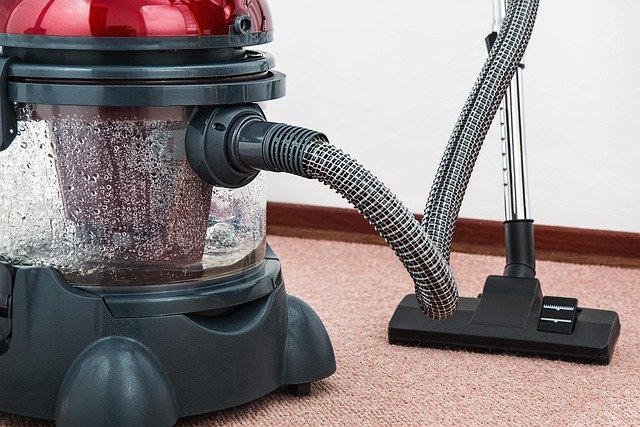Understanding House Cleaning Rates in Australia 2025: Key Factors and Typical Costs
Did you know house cleaning hourly rates across Australia vary widely depending on location and service type? This article explores average prices, common pricing models, and factors influencing costs to help you better understand what to expect in 2025.

Understanding House Cleaning Rates in Australia 2025: Key Factors and Typical Costs
Setting expectations for house cleaning costs in Australia is easier when you know how cleaners structure their pricing and which factors drive quotes up or down. In 2025, rates vary based on location, home size, cleaning frequency, and whether you choose hourly or flat-fee packages. The sections below outline typical hourly ranges, how pricing models differ, what a standard visit might cost by home size, and what to expect for specialised services like end-of-lease or deep cleans. Prices in this article are estimates, and actual quotes in your area may differ.
House Cleaning Hourly Rates in Australia 2025
Hourly pricing remains common across major cities and regional areas. For general domestic cleaning, many households report quotes between A$40 and A$60 per hour in capital cities, with regional areas sometimes slightly lower. Highly experienced or specialised teams may charge above this range, especially for complex jobs. Costs often include basic supplies, while eco-friendly or premium products may incur a small uplift. Minimum booking windows (for example, two to three hours) are typical, so the total visit cost usually matters more than the per-hour figure.
Pricing Models: Hourly Rates vs. Flat Fees
Two approaches dominate: hourly rates and flat-fee packages. Hourly rates are flexible for variable or evolving task lists but make final costs less predictable if cleaning takes longer than expected. Flat-fee pricing sets a fixed price for a defined scope—useful for recurring cleans—yet may exclude extras like oven cleaning, inside fridge, or detailed window work. When comparing quotes from local services, ask what’s included, whether there’s a minimum time, any weekend or public-holiday surcharges, parking fees in dense suburbs, and how re-cleans or satisfaction policies work.
Typical Cleaning Costs by Home Size
A standard clean typically covers kitchens, bathrooms, floors, and general dusting. Indicative per-visit ranges in 2025 are: - Studio or 1-bedroom: A$90–A$160 - 2-bedroom unit/house: A$120–A$220 - 3-bedroom house: A$160–A$300 - 4-bedroom house: A$220–A$380+ These figures assume a regular or one-off standard clean with typical inclusions and no heavy build-up. Larger houses, extra bathrooms, high ceilings, or additional requests (e.g., inside cabinets) can push costs higher. Bundling recurring visits (weekly or fortnightly) may reduce the per-visit price compared with ad-hoc bookings.
Costs for Specialized Cleaning Services
Specialised work comes with different pricing logic. End-of-lease or bond cleans usually follow fixed scopes aligned with rental expectations and can range from about A$200 to A$600+ depending on size and condition, often excluding carpet steam cleaning. Deep cleaning—targeting heavy build-up, grout detail, and inside appliances—might be quoted at A$45–A$70 per hour or as a flat fee starting around A$300 for mid-sized homes. Post-construction or renovation clean-ups tend to be higher due to fine dust and safety considerations, commonly billed at premium hourly rates. Clearly defining scope and outcomes helps control surprises.
In practice, real-world pricing depends on who you book and in which city. Below are examples of well-known Australian providers to illustrate typical market ranges for common services. These are not fixed quotes from the providers; use them as starting points when comparing options in your area.
| Product/Service | Provider | Cost Estimation |
|---|---|---|
| Standard house clean (hourly) | Jim’s Cleaning | Quote-based; market range A$40–A$60 per hour; typical 2–3 hr minimum |
| Flat-fee recurring clean (2-bed) | Maid2Match | Quote-based; market range A$140–A$220 per visit, scope-defined |
| End-of-lease clean (2-bed) | Fantastic Cleaners | Quote-based; market range A$300–A$550 per visit, carpets often extra |
| One-off deep clean (3-bed) | UrbanYou | Quote-based; market range A$300–A$500 per visit depending on condition |
| Regular weekly clean (hourly) | Absolute Domestics | Quote-based; market range A$40–A$55 per hour, minimums may apply |
Prices, rates, or cost estimates mentioned in this article are based on the latest available information but may change over time. Independent research is advised before making financial decisions.
What else influences the final price?
A few variables commonly affect quotes from local services. Location matters: dense CBD areas may involve parking fees or longer access times, while regional travel can add call-out charges. Scope clarity is crucial—listing rooms, bathrooms, surfaces, and add-ons helps providers price accurately and avoid underestimates. Frequency also counts: weekly or fortnightly bookings usually cost less per visit than sporadic cleans because maintenance cleans take less time. Lastly, time-of-day, weekend or public holiday work, pets that shed, and heavy build-up all influence labour time and cost.
Practical budgeting tips in your area
To budget effectively, compare at least two or three quotes that use the same scope so you can assess value on a like-for-like basis. Ask how the cleaner handles variances if a job runs over time, and request a written breakdown of what’s included. For end-of-lease cleans, confirm whether a re-clean is offered if your property manager requests touch-ups. If your priority is predictability, a flat-fee package with a clear checklist can help. If your home or schedule is variable, hourly billing with a capped time budget offers flexibility while keeping spending in check.
Conclusion
Understanding the trade-offs between hourly and flat-fee models, aligning scope with realistic time estimates, and recognising how home size and condition affect labour will make quotes easier to interpret. With a clear brief and comparable proposals from providers in your area, you can choose the option that best fits your household’s needs and budget in 2025.




